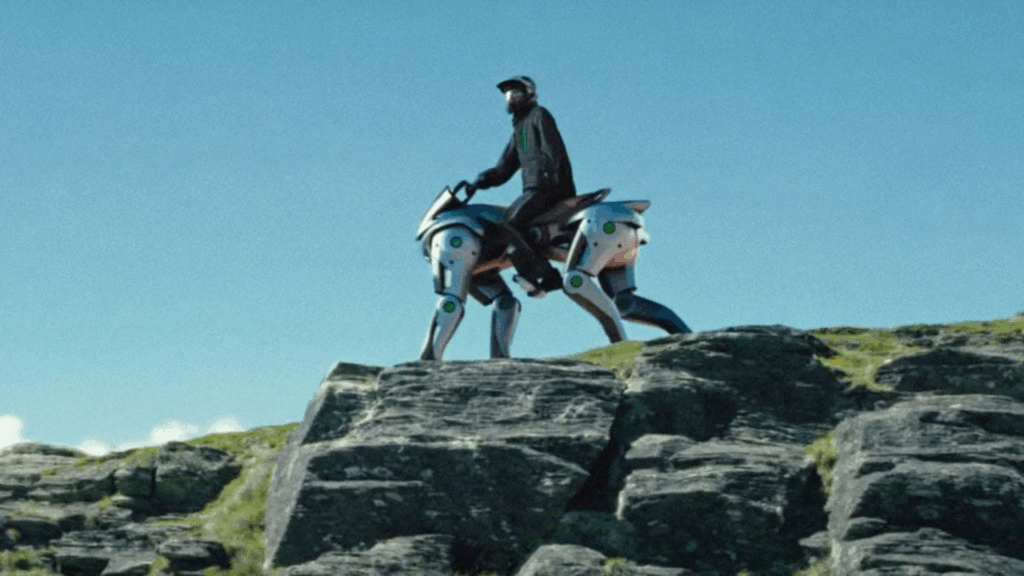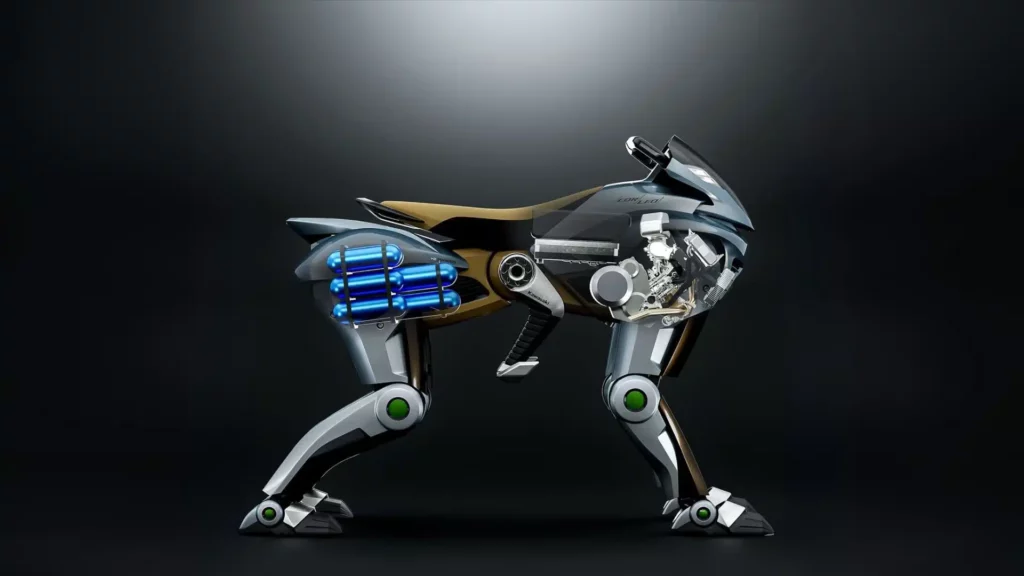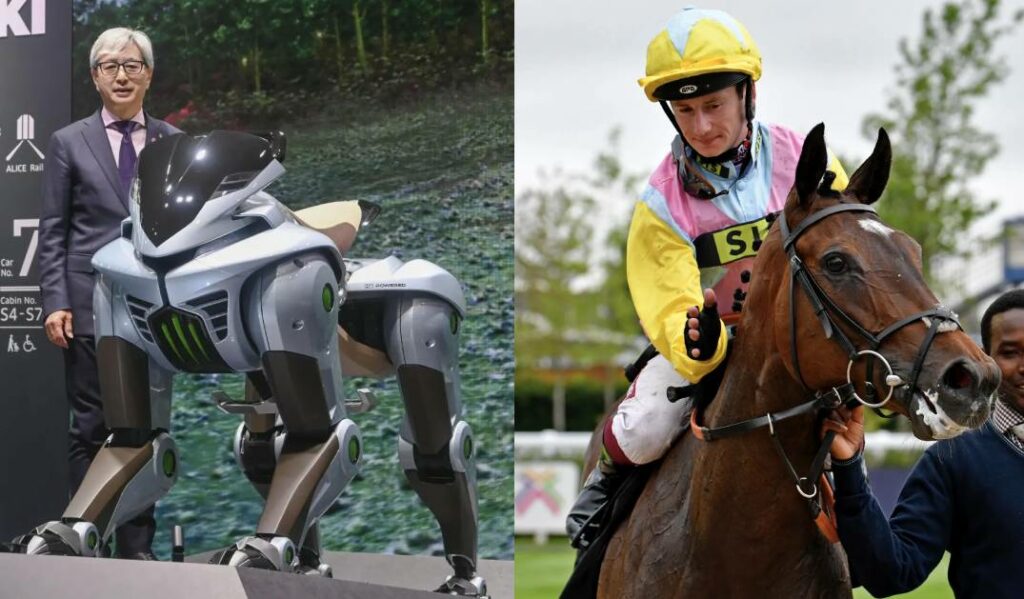The End of Horse Racing as We Know It? Meet Kawasaki’s Robot Horse
Could robots really replace real horses in one of the world’s oldest sporting traditions?
Kawasaki’s latest concept, Corleo, a hydrogen-powered robotic horse, might force us to ask that question sooner than we expected.
What Is Corleo?
Kawasaki recently revealed Corleo, a futuristic robotic mobility platform that looks like it stepped straight out of a sci-fi film.
It moves using four independent robotic legs, each operating separately. This gives Corleo the ability to walk, climb, and balance steadily across different types of terrain, even rough or uneven ground.

The robot is also capable of jumping over obstacles, although Kawasaki hasn’t shared specific performance details yet. It’s early days, but its advanced movement systems already set it apart from other machines.
Powered by Hydrogen, Not Hay
Corleo is powered by a 150cc hydrogen engine which generates electricity for its robotic limbs.
This clean energy system means Corleo runs without emissions, helping to reduce environmental impact. There is no need for fuel or oil changes, making it a much greener alternative to many off-road vehicles.
With sustainability becoming more important in sport and transport, Corleo could appeal to both eco-conscious innovators and progressive racing fans.
Inspired by Motorbikes, Not Mammals
The design of Corleo is based on Kawasaki’s motorbike heritage, not biology.
Its body is built from metal and carbon materials, giving it a sleek, futuristic appearance. At the front, Corleo features a head-like shield with integrated lights to help visibility in different lighting conditions.

Rather than mimicking an animal, Corleo presents itself as a powerful machine with a bold visual identity.
A New Way to Ride
Corleo does not use reins or handlebars. Instead, it reacts to the rider’s body movements.
Leaning forward makes it move forward, and shifting to the side changes its direction. It also features a heads-up display (HUD) that shows live information such as hydrogen levels, stability, navigation, and weight balance.
It is not just a robotic ride, it is a smart, interactive experience.
Could This Replace Real Horse Racing?
At the moment, Corleo is only a concept. But it introduces a serious question.
Could robot horses ever replace real ones in the world of horse racing?
There are arguments both for and against the idea.
Arguments In Favour:
- No risks to animal welfare
- Reduced operational costs
- Consistent and measurable performance
- No need for feed, stables, or veterinary care
- Environmentally friendly and innovative
Arguments Against:
- Loss of history and tradition
- Weaker emotional connection for fans
- Possible resistance from within the racing industry
- Less unpredictability, which might reduce excitement

Horse racing is about more than just speed. It is full of stories, relationships, and unpredictability. The question is whether a robot could ever offer the same thrill.
What Would Robot Racing Mean for Betting?
If robotic horses made it onto the racetrack, betting could look very different.
Odds would be based on programming rather than form or fitness. There might be fewer upsets or shock wins. That could make things feel more predictable, which some punters might not enjoy.
On the other hand, a data-driven racing format could attract a different kind of bettor. With less emotion and more reliability, it might appeal to those who prefer strategy and stats.
Would punters back a machine the way they cheer on a living animal?
When Could Corleo Be Released?
Right now, Corleo remains a concept and Kawasaki has not announced any firm plans for commercial release.
The company has mentioned a potential launch window around 2050, but there is no confirmed timeline for development or mass production.
Even so, the idea is now out in the open. Whether Corleo ends up in sport, transport, or something else entirely, the racing world is likely watching closely.
The Bottom Line
Horse racing has been part of human history for centuries. The partnership between rider and animal is at the heart of its appeal.
But Corleo presents a future where performance does not depend on biology. It offers a vision of sport and mobility that is smarter, cleaner, and possibly fairer.
We may not see robot horses on the racetrack tomorrow. But the conversation has already begun. And the finish line might be closer than we think.

